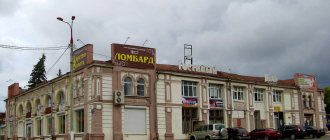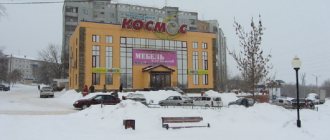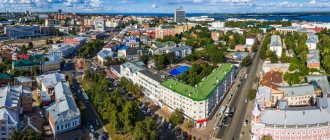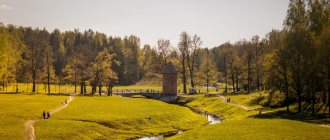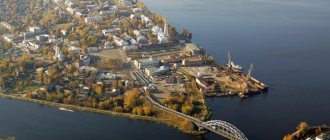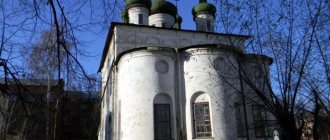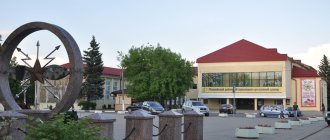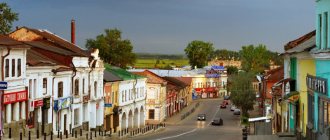A trip along the middle Volga will definitely lead to the small town of Zhigulevsk, located not far from Togliatti. Here you can make a stop to get acquainted with the history of the Russian outback, find out who barge haulers are, and feel for yourself how mysterious Russian nature is. There are quite good hotels in the city that provide traditional services to guests. If you want a secluded environment, you should book an apartment. Getting to know the sights will take one or two days. It is recommended to start with natural surroundings.
Excursion to the Zhigulevsky Nature Reserve
Visiting the protected area is possible only after obtaining a special permit or with tourist vouchers issued by the administration of the reserve.
You can apply for a pass or a group voucher in person at the checkpoint or through the reserve’s website. You can also buy vouchers from accredited guides, a list of which can be found on the official website of the Zhigulevsky Nature Reserve.
Excursion to the Shiryaevsky adits, © Victoria Sarkisova
The total time spent in the protected area should not exceed 2.5 hours. It is prohibited to leave the designated trail or route. The ban includes stopping and resting outside special places, collecting plants, starting a fire and scattering garbage. Violators of these requirements face a financial fine.
The only accessible road route in the Zhigulevsky Nature Reserve is to Strelnaya Mountain. The observation decks offer majestic views of the Volga, Zhiguli Mountains, the dam and nearby settlements. The route begins from the forestry checkpoint in the village. Zolnoye, where you need to register and buy a ticket. The cost does not depend on the number of people, but on the type of vehicle.
Ticket prices on the official website of the Zhigulevsky Nature Reserve
From the checkpoint to the parking lot it is 6 km, then a short equipped pedestrian part begins - 320 m.
Another excursion route leads to the Stone Bowl tract . An unequipped pedestrian trail begins in the village. Solnechnaya Polyana takes place in mountainous terrain, with ups and downs. The length of the trail in one direction is 2 km.
Most often, this route is chosen by those travelers who are not just looking for what to see and where to beautifully capture themselves in a photo. Along this path they purposefully go to the famous spring in order to drink water from it and touch the spiritual sacraments. Above the spring there is a stone with the inscription: “The miraculous spring of St. Nicholas.” Nearby is a small chapel in honor of St. Nicholas the Wonderworker, which adds peace to the majestic views.
The beginning of the walking trail, © Alexander Smirnov
One of the most accessible and famous man-made attractions of the reserve is the Shiryaevsky adits , carved out in the Zhiguli Mountains back in the 19th century. They are located on the left slope of the Shiryaevsky ravine and form many kilometers of labyrinths. For safety reasons, many of the former mine workings are closed to the public. It is impossible to get lost in the adits open to tourists, but you should take into account the fact that even in the summer heat it is cold inside them.
Main streets of Zhigulevsk
On the map of Zhigulevsk you can see the main streets with house numbers and nearby objects:
- st. Novo-Samarskaya runs through the entire city next to Mount Lipovaya Griva;
- st. Komsomolskaya crosses the street. Nikitinskaya. Nearby – Mogutovaya Mountain, the recreation park named after the 40th anniversary of the Komsomol, the Crystal stadium;
- st. Vokzalnaya is located on the outskirts of the city, not far from Samarskaya Luka. Nearby is a railway station;
- st. Tkacheva passes along the border of the Zhigulevsky cemetery.
Plants
On the territory of the Zhigulevsky Nature Reserve there is a unique plant community called the rocky steppe. Outside the protected zone, they are on the verge of extinction.
Rocky steppes were formed over millions of years due to a combination of several factors: severe temperature contrasts, pronounced insolation, practically anhydrous conditions and an extremely thin soil layer (up to 5 cm). This is how unique plants, characteristic only of the Volga region, appeared - endemics.
They are adjacent to lime-loving and rocky plant species. These include relict pine forests, as well as low-growing mountain oak forests, with twisted trunks and branches.
© Lyudmila Martyshova
In general, the flora of the Zhigulevsky Reserve includes over a thousand species. Of these, 130 species are listed in the Red Book of the Samara Region and Russia, and some have special scientific significance. For example, Tsinger's astragalus, thyme and spurge Zhiguli, carnation and Volga fescue, Sprygin's bell, Tsvelev's violet, Korzhinsky's anemone and a number of other equally interesting plants that are found only in this territory.
Story
Ideas about preserving unique nature for future generations and organizing a nature reserve in Zhiguli have been floating around in scientific circles since 1914. The outstanding naturalist, botanist and one of the founders of environmental protection in Russia, Ivan Ivanovich Sprygin, began to implement this idea.
In 1926, Sprygin, as part of an expedition to the Samara Luka, went to select a site for the reserve. And already on August 19, 1927, the Zhigulevsky protected area was created as part of the Penza Nature Reserve. And it, in turn, was renamed the Middle Volga Nature Reserve, of which I. I. Sprygin became the director.
Administrative building of the reserve, © Alexander Smirnov
Ivan Ivanovich remained in the position of director until 1935. When the reorganization began, management was moved from Penza to Bakhilova Polyana. At that time, V.I. Smirnov took over as director, and Sprygin himself remained in charge of the scientific work of the reserve.
For outstanding services in the study and protection of natural biodiversity, 5 plant genera, the Penza Botanical Garden (1973) and the Zhigulevsky State Reserve (1977) were named after Sprygin.
Over the years, the boundaries of protected areas expanded, the number of research works increased, nurseries were established, and the species composition of flora and fauna was described.
© Victoria Sarkisova
More than once, the reserve and its employees experienced difficult times: the Great Patriotic War, the development of oil wells, the liquidation of the reserve as such in 1951 and the transfer of its territories to the management of the forestry enterprise. In 1959, the Zhigulevsky Nature Reserve was revived, but not in full force. However, due to disagreements at the top of the government, it was liquidated again in 1961.
Through incredible efforts, the Zhigulevsky Nature Reserve was revived in 1966. The staff was strengthened by a large number of young specialists. In the new millennium (2011), the reserve acquired the status of “biosphere”.
Routes on the map of Zhigulevsk. Transport infrastructure
Zhigulevsk is crossed by the M5 highway - a federal highway . The distance to Moscow is about 970 km.
Every day from the city bus station there is a bus service with Samara, Tolyatti, Ulyanovsk, Penza, Kuznetsk.
through the Zhigulevsk railway station in the directions “Samara - Ulyanovsk”, “Moscow - Tolyatti”.
The street map of Zhigulevsk shows 11 public transport routes, which are represented by buses and minibuses.
Animals
The symbol of the Zhigulevsky Nature Reserve is the Asian badger. The cute animal not only appears on emblems, but lives in the only “Badger Town” in all of Russia. The town, or enclosure complex, is located immediately behind the administrative building in the village of Bakhilova Polyana.
All three badgers living in the town were born in captivity and are not adapted to life in the forest. The most important and oldest badger (over 10 years old) is Boris Mikhalych. He is accompanied by two “ladies” who answer to the names Masha and Dasha. You can visit the town and watch the life of badgers for free. It is worth considering that these are crepuscular animals; they most often sleep during the day. Moreover, in October-November, badgers go into hibernation and emerge from it only in March-April.
The Zhigulevsky Biosphere Reserve is distinguished by a wide variety of bats. Thus, in the adits of Mount Popova there is the largest wintering of bats in Europe (over 30 thousand). Several species of these representatives of the animal world are listed in the Red Book.
© Lyudmila Martyshova
Among the large mammals found on the territory of the reserve are wild boars, elk and roe deer. Predators are represented by foxes, pine martens, ermines and rare lynxes. Hares and various species of rodents also live here.
The list of bird species living in the reserve is constantly updated. Protected species of winged birds: peregrine falcon, buzzard, short-tailed eagle, golden eagle, saker falcon, black stork, gray crane, black-headed laughing owl, eagle owl, tawny owl, gray shrike and others. Two species under special control are the white-tailed eagle and the imperial eagle, which are listed in the Red Book of International Importance.
